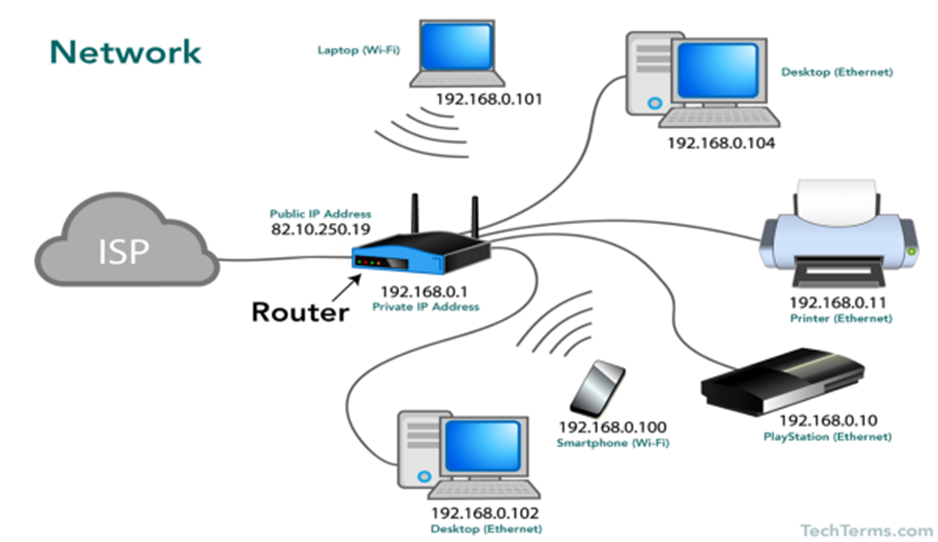Abstract
This article delves into the transformative impact of cloud computing on Digital Imaging and Communications in Medicine (DICOM) routing within the healthcare industry. It highlights the crucial role of cloud-based data transfer in advancing medical care, particularly in handling the extensive datasets typical in medical imaging. By offering an introduction to the fundamentals of networking and cloud computing, this article sets the stage for a deeper understanding of cloud-based DICOM routing and its potential to drive future innovations in healthcare.
Introduction
Imagine a world where medical diagnoses are swift, precise, and less burdensome for patients. This is swiftly becoming a reality as medical imaging and image post-processing undergo transformative advancements powered by AI and cloud computing. These technologies, particularly through Software as a Service (SaaS) models, are revolutionizing the acquisition and routing of Digital Imaging and Communications in Medicine (DICOM) data over the Internet. This shift heralds a new era in healthcare, enhancing efficiency, accuracy, and ultimately, patient outcomes.
Historical Perspective on Medical Imaging
The standardization of network connectivity in medical imaging modalities marks a pivotal shift in healthcare technology. Historically, the inclusion of Ethernet ports and networking capabilities in medical imaging devices began to proliferate with the adoption of the DICOM standard in the early 1990s, facilitated by efforts from organizations like the National Electrical Manufacturers Association (NEMA) and the American College of Radiology (ACR). This standardization has enabled seamless data transfer and interoperability across diverse healthcare systems.
Cloud Computing: A Basic Primer
The introduction of networking capabilities in radiological devices, particularly the inclusion of ethernet ports for DICOM routing, marks a significant milestone in medical imaging technology. This innovation facilitates the transmission of large imaging datasets across connected devices, setting the stage for the adoption of cloud computing in healthcare. This paper posits that leveraging cloud solutions for DICOM data transfer is pivotal for enhancing efficiency, scalability, and reliability in medical imaging.
Understanding IP Addresses, Ports, and Protocols
- IP Address: A unique identifier for each device on a network, enabling devices to find and communicate with each other. Example:
- Private IP: 193.168.2.1
- Public IP: 64.23.44.5
- Port: A numerical label in networking used to specify specific applications or processes on a device, allowing for multiple services to run simultaneously.
- Protocol: A set of rules and standards that dictate how data is transmitted over a network. DICOM is an example of a protocol specifically designed for medical imaging data.
- DNS: Domain Name Service – A services that registers domain names like www.omnipacs.com to an IP like 64.23.44.5
Routers, Firewalls, and Network Layers
- Router: A device that forwards data packets between computer networks, operating at the network layer of the OSI model.
- Firewall: A network security system that monitors and controls incoming and outgoing network traffic based on predetermined security rules, operating at various layers of the OSI model, primarily at the network and transport layers.
- Switch: The switch is like a (electric power strip) it allows you to connect multiple network connections to one port.

Imaging Modality to Cloud PACS Connectivity
The seamless connectivity between imaging modalities and cloud-based Picture Archiving and Communication Systems (PACS) is a cornerstone of modern radiology, enabling efficient, scalable, and secure management of medical imaging data. This integration not only streamlines the workflow for radiologists and healthcare providers but also significantly enhances the accessibility and utility of medical images, facilitating timely and accurate diagnosis and treatment planning.
Understanding Modality to Cloud PACS Connectivity
Connectivity between imaging modalities (such as CT, MRI, X-ray machines) and cloud PACS involves several key components and steps. First, imaging modalities capture the medical images and then, using the Digital Imaging and Communications in Medicine (DICOM) standard, send these images to a local gateway or directly to a cloud-based PACS. This process requires careful configuration of network settings, including the assignment of unique IP addresses and AE Titles to ensure accurate and secure transmission of imaging data.
The local gateway or server, often equipped with DICOM routing software, acts as an intermediary, facilitating the compression, encryption, and transfer of DICOM files from the modalities to the cloud PACS. This setup leverages cloud computing’s scalability and flexibility, allowing healthcare organizations to manage storage and computational resources efficiently, adapting to the varying demands of medical imaging workloads.
The Transformative Role of Cloud Computing in DICOM Routing
The integration of cloud computing into the realm of Digital Imaging and Communications in Medicine (DICOM) routing signifies a monumental shift in the management, storage, and dissemination of medical imaging data. This transformation is driven by the need for scalable, efficient, and accessible medical imaging solutions that can adapt to the burgeoning demands of modern healthcare systems. As we delve into the transformative role of cloud computing in DICOM routing, it becomes evident how this technology is reshaping the landscape of medical imaging and, by extension, patient care.
Enhanced Scalability and Flexibility
Cloud computing offers unparalleled scalability and flexibility for DICOM data management. Traditional on-premise DICOM storage solutions are limited by physical hardware capacities and require significant capital investment for expansion. In contrast, cloud services allow healthcare organizations to scale their storage resources on demand, accommodating growing imaging data volumes without the need for upfront investment in additional hardware. This scalability ensures that healthcare providers can manage an increasing number of imaging studies efficiently, supporting the delivery of timely and effective patient care.
Improved Accessibility and Collaboration
The cloud-based routing of DICOM images facilitates enhanced accessibility, enabling healthcare professionals to access critical imaging data from anywhere, at any time. This accessibility is pivotal for supporting remote diagnostics, telemedicine, and collaborative care models, where specialists from different locations can review and discuss imaging studies in real-time. By breaking down geographical barriers, cloud computing fosters a more integrated and collaborative approach to patient care, enhancing the quality of diagnostics and treatment planning.
Cost-Effective Data Management
Migrating DICOM routing to the cloud also presents a cost-effective solution for healthcare organizations. By leveraging cloud services, institutions can reduce their reliance on expensive on-premise servers and data storage systems, lowering maintenance and operational costs. Furthermore, cloud providers typically offer pay-as-you-go pricing models, allowing healthcare providers to only pay for the storage and computing resources they actually use. This cost efficiency enables even smaller healthcare facilities to access advanced DICOM routing and storage capabilities, democratizing access to high-quality medical imaging solutions.
Enhanced Security and Compliance
Security and compliance are paramount concerns in the handling of medical imaging data. Cloud computing platforms have made significant strides in offering robust security features that meet or exceed the regulatory standards set forth by healthcare authorities, such as the Health Insurance Portability and Accountability Act (HIPAA) in the United States. Through advanced encryption, secure data transfer protocols, and comprehensive compliance frameworks, cloud providers ensure that DICOM data is securely managed and protected against unauthorized access, loss, or breaches.
Accelerating Innovation in Medical Imaging
Finally, cloud computing is a catalyst for innovation in medical imaging. The cloud ecosystem provides a fertile ground for the development and deployment of advanced imaging analytics, artificial intelligence (AI), and machine learning (ML) models. These technologies can be integrated into the DICOM routing process, offering sophisticated tools for image analysis, anomaly detection, and predictive diagnostics. By harnessing the computational power and flexibility of the cloud, healthcare organizations can leverage these cutting-edge technologies to enhance diagnostic accuracy, improve patient outcomes, and streamline imaging workflows.
The Impact of Cloud Computing on Medical Imaging Post-Processing
Cloud computing offers a flexible and efficient platform for handling the computationally intensive tasks associated with medical image post-processing. By utilizing cloud resources, healthcare organizations can access advanced processing tools without the need for significant upfront investments in IT infrastructure. This capability is particularly beneficial for applying complex algorithms and AI models that require substantial computational power. Moreover, cloud-based post-processing facilitates collaborative efforts, enabling specialists from various locations to work together seamlessly, thus enhancing the quality of patient care.
Key Medical Imaging Post-Processing Procedures and Techniques
| Name | Description | Examples | Impact |
|---|---|---|---|
| 3D Reconstruction | Converts 2D image data into 3D models, providing a volumetric view of anatomical structures. | Reconstruction of the spine or skull from CT images, facilitating surgical planning. | Enhances surgical accuracy and planning, improving patient outcomes. |
| Image Segmentation | Delineates specific regions or structures within an image, allowing for detailed analysis. | Segmentation of tumors in MRI scans, enabling precise measurement and monitoring over time. | Critical for accurate diagnosis, treatment planning, and monitoring of disease progression. |
| Image Registration | Aligns multiple images taken at different times or using different modalities, for comparative analysis. | Alignment of PET and CT images to combine metabolic and anatomical information. | Improves diagnostic accuracy by providing comprehensive views of the patient’s condition. |
| Enhancement Filters | Applies algorithms to improve image quality, making details more visible and interpretable. | Noise reduction and edge enhancement in mammography images, aiding in the detection of microcalcifications. | Facilitates early detection of diseases such as breast cancer, potentially saving lives. |
| AI-Driven Analysis | Utilizes artificial intelligence models to identify patterns, anomalies, and diagnostic features in images. | Automated detection of lung nodules in chest X-rays, supporting radiologists in screening processes. | Increases diagnostic speed and accuracy, reducing the workload on radiologists. |
Post-processing of medical images in the cloud represents a significant advancement in the field of radiology, offering powerful tools for enhancing diagnostic accuracy and efficiency. By leveraging cloud computing, healthcare organizations can implement advanced imaging analysis techniques and AI-driven algorithms, thus improving the quality of patient care. As technology continues to evolve, the role of cloud-based post-processing in medical imaging is expected to grow, further transforming the landscape of diagnostic radiology.
Introduction to Amazon Web Services (AWS)
Amazon Web Services (AWS) stands at the forefront of cloud computing, offering a robust, scalable, and secure platform that powers applications across various industries worldwide. AWS provides a broad set of infrastructure services, such as computing power, storage options, and networking capabilities, delivered as pay-as-you-go services. It enables businesses and organizations to run web and application servers in the cloud to host dynamic websites, store all types of data, manage databases, and support a myriad of other functionalities. For healthcare and medical imaging, AWS offers tailored solutions that address specific industry needs, including compliance with regulatory standards, data privacy, and security measures.
AWS’s Focus on Healthcare
AWS is deeply invested in transforming the healthcare industry by providing cloud services that enhance patient care, improve operational efficiencies, and foster innovation in medical research. By leveraging AWS, healthcare organizations can securely manage vast amounts of health data, deploy telehealth solutions, and accelerate the development of new healthcare applications. AWS’s commitment to healthcare is evident in its compliance with HIPAA and other regulatory standards, ensuring that sensitive health information is protected across all its services.
Top 3 AWS Services Used for Medical Imaging
| Service Name | Description | Purposes/Examples |
|---|---|---|
| Amazon S3 | Amazon Simple Storage Service (S3) is an object storage service that offers industry-leading scalability, data availability, security, and performance. | S3 is extensively used for storing and retrieving any amount of medical imaging data, such as DICOM files, enabling secure and scalable storage solutions for healthcare organizations. |
| Amazon SageMaker | A fully managed service that provides every developer and data scientist with the ability to build, train, and deploy machine learning models quickly. | SageMaker is used for developing AI and ML models that can analyze medical images, detect abnormalities, and support radiologists in diagnostic processes. Examples include predictive analytics for patient outcomes and automated image tagging. |
| AWS Lambda | A serverless compute service that runs your code in response to events and automatically manages the underlying compute resources for you. | Lambda can be used to automatically process medical images as they are uploaded to the cloud, such as converting DICOM images to different formats, or triggering analysis models built with SageMaker. |
Amazon Web Services (AWS) is revolutionizing the healthcare industry by offering cloud solutions that enhance the management and analysis of medical imaging. Through its comprehensive suite of services, AWS enables healthcare organizations to store vast amounts of medical imaging data securely, leverage advanced machine learning models for image analysis, and ensure compliance with health data regulations. As the healthcare sector continues to evolve, AWS’s cloud services are set to play a crucial role in driving innovations that improve patient care and outcomes.
Opportunity Areas
As the healthcare landscape continues to evolve under the influence of digital and AI-enabled advancements, the integration of cloud computing, SaaS, and DICOM data routing stands out as a revolutionary force, particularly for small healthcare specialty clinics like orthopedic, pain management, and spinal care. This article has traversed the journey from the historical roots of network connectivity in medical imaging modalities to the transformative potential of cloud computing and AWS services in redefining medical imaging and post-processing.
For owner-operators of small healthcare clinics, this evolution is not just a testament to technological innovation but a beacon of operational transformation. The shift towards cloud-based PACS and DICOM routing embodies a leap towards efficiency, scalability, and enhanced patient outcomes. It democratizes access to sophisticated medical imaging technologies, once the exclusive domain of larger institutions, and lays the groundwork for small clinics to offer state-of-the-art patient care.
The adoption of cloud computing and AWS services translates into tangible benefits for these clinics. It enables them to manage and analyze vast amounts of imaging data with unprecedented ease and security, leverage AI for diagnostic accuracy, and participate in a collaborative healthcare ecosystem without the burden of significant infrastructure investments. This not only elevates the standard of care provided but also positions these clinics as pioneers in the adoption of digital healthcare solutions.
Conclusion
As we look ahead, the key questions for owner-operators of small healthcare clinics revolve around how to strategically implement these technologies to maximize their benefits. How can they ensure data security and compliance in the cloud? What are the best practices for integrating AI into their diagnostic processes? And how can they leverage cloud scalability to adapt to the growing demands of medical imaging data? The answers to these questions will define the next steps in their journey towards becoming agile, efficient, and patient-centered healthcare providers in the digital age.
This digital transformation, underscored by the advancements in cloud computing and AWS services, is not just a trend but a strategic imperative for small healthcare clinics aiming to thrive in the rapidly evolving healthcare sector. By navigating this transition thoughtfully and proactively, small clinics can unlock new horizons of patient care, setting a new standard for excellence in healthcare.
References
- “Digital Imaging and Communications in Medicine (DICOM): A Practical Introduction and Survival Guide” by Oleg S. Pianykh. This book provides an extensive overview of the DICOM standard and its application in medical imaging.
- “Cloud Computing: Principles, Systems and Applications” edited by Nick Antonopoulos and Lee Gillam. This book offers insights into the workings of cloud computing and its applications across various sectors, including healthcare.
- “Networking Basics: What You Need to Know” by Cisco. Available online, this resource explains the fundamentals of networking, including IP addresses, ports, and protocols.
- “AWS in Healthcare and Life Sciences.” AWS Official Website. This page outlines the services and capabilities of AWS for healthcare applications, including medical imaging.
- “Advancements in Medical Imaging Technology: The Role of Cloud Computing” published in the Journal of Medical Imaging and Health Informatics. This article explores how cloud computing is driving innovations in medical imaging, including post-processing techniques.
- “Artificial Intelligence in Radiology: Cloud-Based Solutions for Advanced Imaging Analysis” ., featured in Radiology Today. The paper discusses the integration of AI with cloud computing for improving diagnostic procedures in radiology.
Signup for OmniPACS: Free Trial



